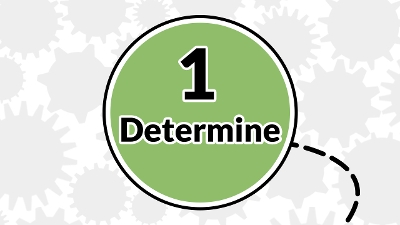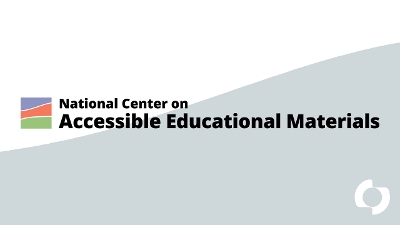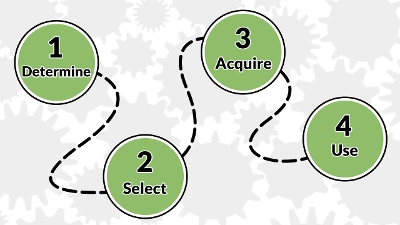Showing results 41-50 of 69 for Schools
Search results
-

Determining a learner's need is the first step in a multi-step decision-making process for acquiring accessible formats.
-

Accessible versions of educational materials may mean the difference between learning barriers and learning opportunities. Learn how the use of accessible digital materials and technologies strengthens opportunities for all learners to experience independence, participation and progress.
-

What actions need to be taken so that learners who need accessible formats receive them in a timely manner? Whether a learner is in PreK-12, higher education, or career training, the process is multi-step.
-
Presentation

Saturday, November 28 – Tuesday, December 1, 2020
In this poster session, participants will use tools to perform a “mini-audit” of their websites. The mini-audit will give participants a sense for the accessibility of their websites.
-
Find answers to commonly asked questions about NIMAS and related topics such as the NIMAC, state and local agency requirements, and the provision of accessible formats from NIMAS filesets.
-
Find answers to your questions about the learning context in which accessible formats will be used, Checkpoint 1 of the process for selecting accessible formats.
-

The 2019-2024 National AEM Center at CAST provides technical assistance, coaching, and resources to increase the availability and use of accessible educational materials and technologies for learners with disabilities across the lifespan.
-

AEM Center Advisory Committee members represent a range of Early Learning, K-12 and Postsecondary education, and Workforce Development constituents and their expertise informs the Center's technical assistance efforts.
-
Learn how to vet and purchase materials to ensure they are accessible from the start, and the options for retrofitting inaccessible materials when it is necessary.
-

Explore the coordinating systems needed for K-12 and learn how to develop or revise a K-12 system to address best practices for the provision of accessible materials and technologies.
